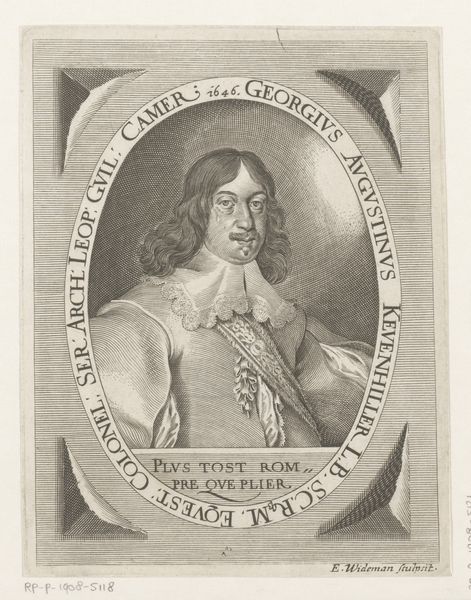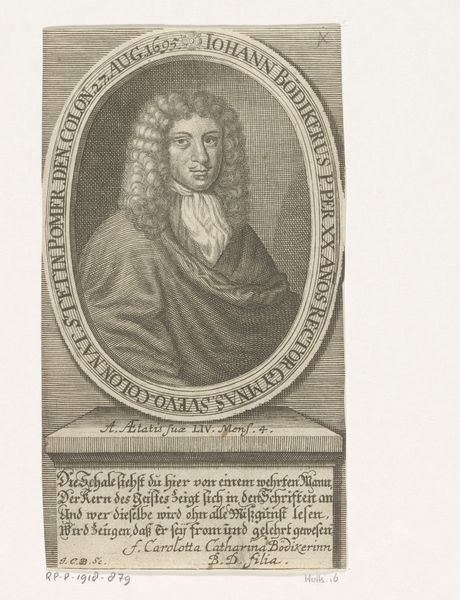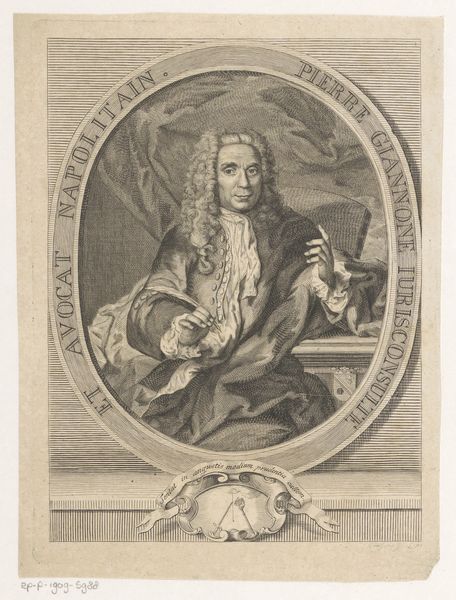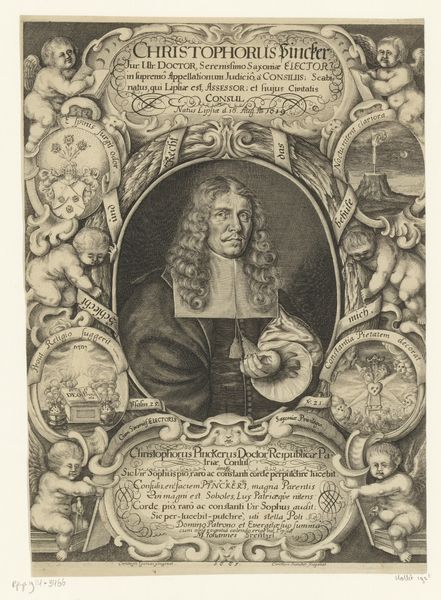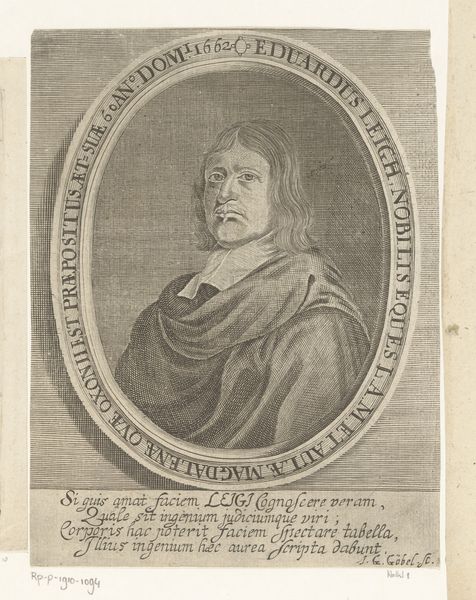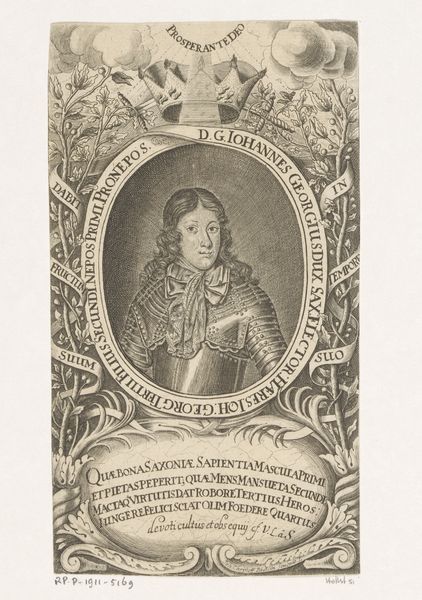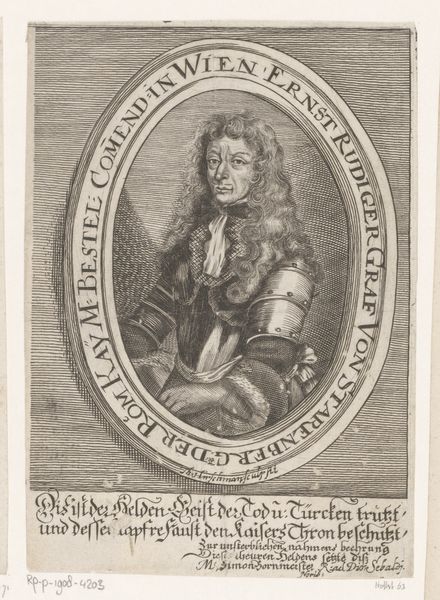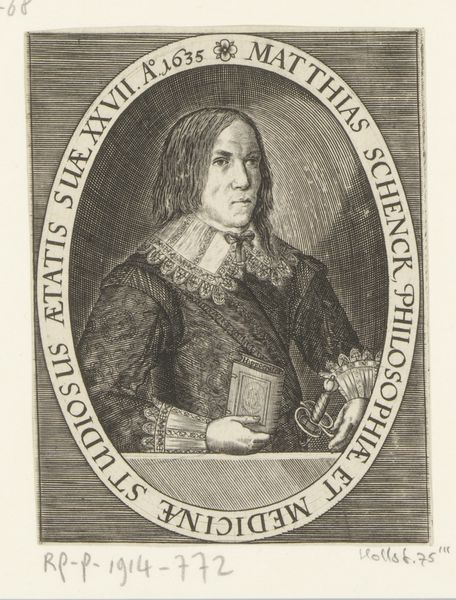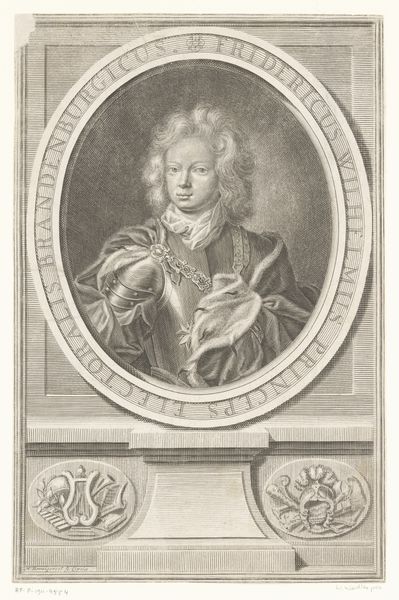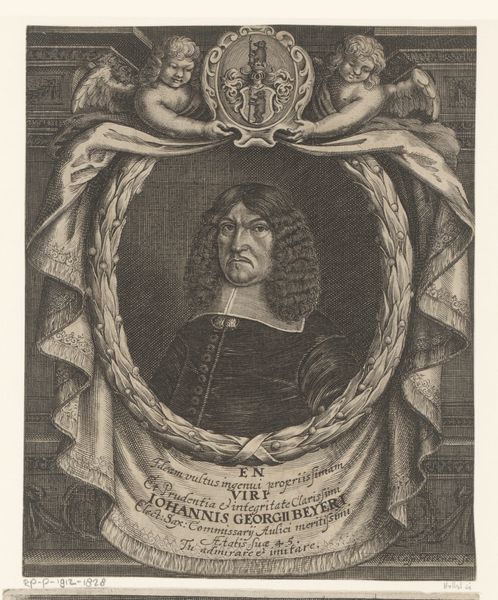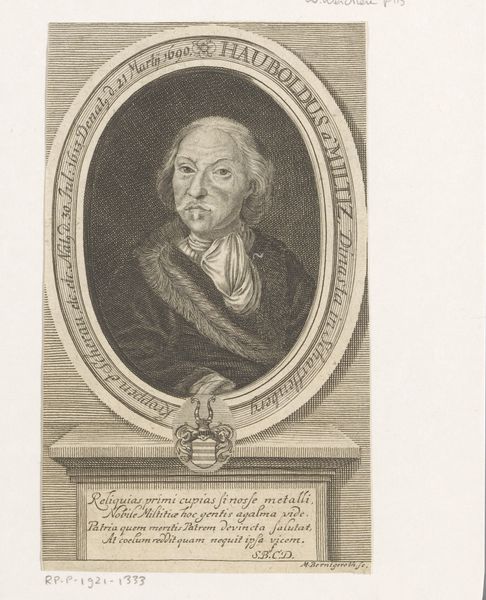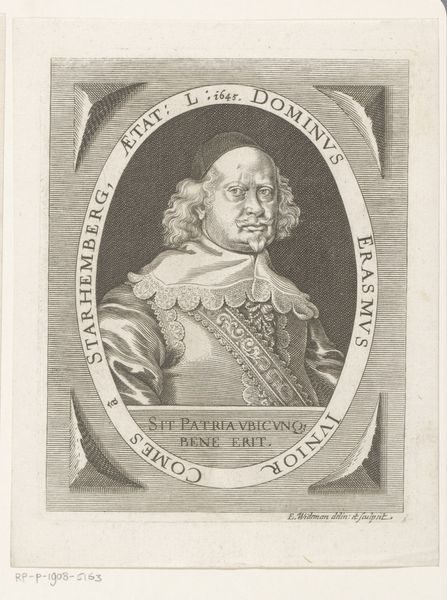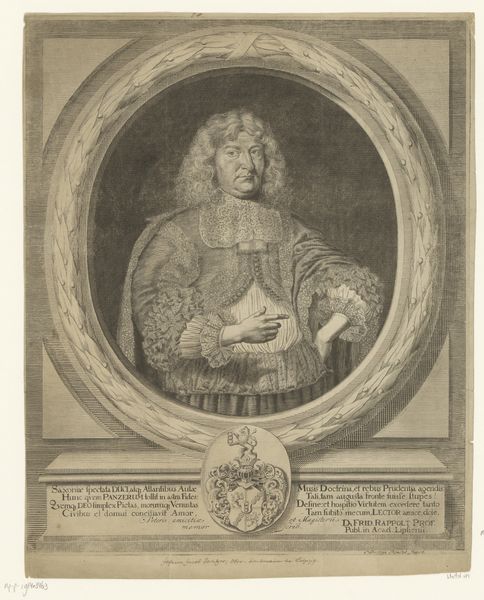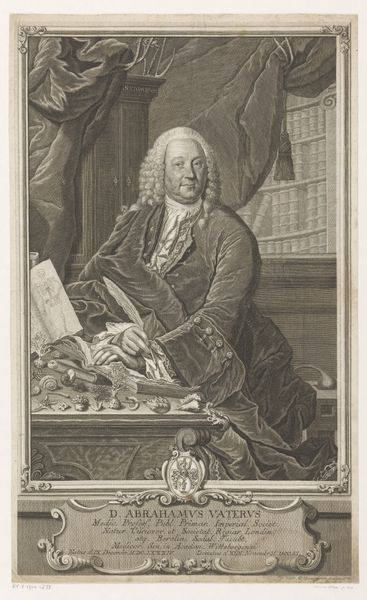
print, etching, engraving
#
portrait
#
baroque
# print
#
etching
#
old engraving style
#
engraving
Dimensions: height 148 mm, width 115 mm
Copyright: Rijks Museum: Open Domain
Elias Widemann created this portrait of Sigmund Friedrich von Götz in 1646, using etching and engraving. Widemann situates von Götz, a military man, firmly within the structures of power in the 17th century. Yet, there's an interesting duality presented here: von Götz is depicted in armor, a symbol of strength and authority, but the inscription "NEC TIMIDVS NEC AVDAX"—neither timid nor reckless—hints at a more nuanced identity. It suggests a man of considered action, not ruled by extremes. Consider the historical context. The 17th century was a time of significant political and social upheaval in Europe, a period of shifting alliances and power struggles, so the ability to embody these qualities may have been essential for survival. The portrait invites us to consider the complexities of identity, and how societal expectations can shape individual expression.
Comments
No comments
Be the first to comment and join the conversation on the ultimate creative platform.
